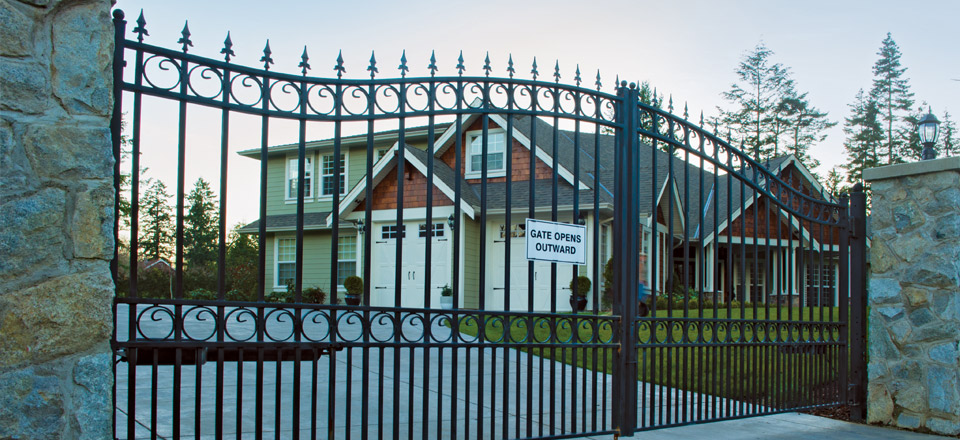– by Barry Mathias, photos by nuttycake.com –
North Saanich is a unique municipality, renowned for its rural beauty, its spacious residences, its attractive farms, and its seven idyllic marinas. Yet, it is also home to the busy Swartz Bay Ferry Terminal, to the expanding Victoria International Airport, and to the convenient floatplane aerodrome near the Institute of Ocean Sciences. These contrasts are reflected in the on-going debate regarding the provision of housing in this District.
It’s interesting to note that in 2006, when the population was just over 10,800, over 86 percent of housing in North Saanich was single detached residences on an average of one acre, and 10 percent of the housing stock was rental. This contrasted with Sidney, which had a population of just over 11,300, with 40 percent single-detached housing and 23 percent rental. This difference continues.
Today, the population of North Saanich is approximately 11,200. In 2011 it was 11,089, 2.5 percent up on the 2006 assessment. This contrasted with the national average growth of 5.9 percent. It is separated into seven neighborhoods with Dean Park in the south east of the district being the most populous and dense part of the municipality, with approximately 3,200 residents, and reaching up to McDonald Park/Curteis Point, north of Sidney, with a population of approximately 900. Density is the big issue.
Alice Finall, the recently re-elected Mayor, is quite clear: “I am against increasing density in North Saanich with no benefit to the community.” She is concerned with the impact on the rural/residential designated role of the municipality in the Regional Context Statement, and the impact of urban sprawl on rural infrastructure. “Urban levels of density are incompatible with the character of existing residential neighborhoods,” she says.
Secondary suites were an issue in 2009 when it was recognized that, although illegal at the time, they were flourishing in certain areas of the municipality. Mayor Finall was first elected in November 2008. In 2009, with the support of her Council, it was decided to try a pilot scheme: “We agreed to allow a pilot for secondary suites in the south east quadrant of the municipality,” where 45 percent of the municipality’s illegal suites were situated. “However, there was not much take-up.”
Those who wanted to take advantage of the ‘pilot scheme’ would be faced with the cost of bringing their property ‘up to code’, and some perhaps did not want their property’s income to be noticed. “Council is now considering the possibility for people throughout the municipality to apply to the District to install a secondary suite; whether this will encourage more applications remains to be seen.”
“Among the 13 Greater Victoria municipalities, North Saanich is the second highest priced market,” says Karen Dinnie-Smyth, an award winning Realtor at the Re/Max Camosun office in Sidney. “The average sale price for 2014 was $827,000; only Oak Bay is more expensive at $924,000.” She explains that in the last two years “nine houses have sold for more than $1.5 million, and three of those went for more than $4 million.”
“We have an aging demographic,” says John Upward, Freelance Consultant, “this is reflected in a lower school population.” Reports indicate that by 2016, 48 percent of residents will be over 55. He maintains that there is a real need for low cost housing in the municipality. “We have a strong employment base focused on major employers: the Airport and its industrial estate; the Ferry Terminal, the marinas with at least 200 employees, and the Canadian Coast Guard development at Pat Bay with a potential for 400 jobs.” He points to the fact that the majority of workers drive considerable distances to get to work. “Why is North Saanich encouraging the expansion of companies and their work force but against providing the necessary housing?”
There are, and have been, only a few ‘density’ developments approved in North Saanich. “They mainly exist to the north of Sidney in the McDonald Park Estates, and below Sidney in what is termed the South East Quadrant, including the Dean Park and Canora Mews areas,” says John Upward. North Saanich Council recently approved a Development Permit for the building of three, eighteen unit condominiums (total 54 units), at McDonald Park Estates. “Work on these condominiums is yet to begin.”
Density exists in the less obvious areas of the District. Karen Dinnie-Smyth referred to the Canora Mews development: “situated at the end of the airport runway, and across the road from Sidney, 40 single-family ‘affordable’ units on smaller lots were allowed, and these sold quickly.”
Mayor Finall pointed out that although these units were originally proposed as ‘affordable housing’, they ended up selling for between $400-$550,000. “After GST and Property Transfer Tax, can these still be considered affordable?” Housing is considered ‘affordable’ when the cost of a mortgage is taking less than 30 percent of a family’s income. “I opposed this development as the lot sizes were inconsistent with the OCP,” she says.
Karen Dinnie-Smyth confirmed that there has been some density added in more rural areas of North Saanich, “but it has been added to areas where greater density already existed e.g. Pat Bay and Deep Cove and along the eastern section closer to Sidney.” She came up with some interesting statistics. “There were 171 houses ‘Sold’ during 2014, and the average property took three months to sell. Contrasting with Oak Bay where there were 256 houses ‘Sold’ during 2014, the average sale time was only 48 days.”
“When talking about the slower market in North Saanich, the aging demographic has to be taken into account,” she said. “With the current average sale price and a need for down payment of 20 percent, an income of approximately $100,000 has to be earned to qualify for a mortgage; this leaves little to no financial ability to update or do maintenance that may be required.”
‘There is a need for more development that young people can afford,” says John Upward. He maintains that Council has used delaying tactics, and refers to the Reay Creek Meadows development: “First proposed in 2001, it was only last year that Council agreed to the rezoning.” He revealed the developer has to pay the Council $1.8 million to get started. “At this time, the current Council’s attitudes increase the risks for developers.”
Steven Heywood, reporting in the Victoria News in July 15th 2014 edition, on Bylaw 1352, wrote that the District’s Regional Growth Strategy was changed at the Public Hearing, and the OCP was amended in a 4-2 vote to allow greater development, “the likes of which the community hasn’t seen in recent years.” Referring to the Regional Context Statement, the Mayor remained unconvinced that the proposed increased housing density between Canora and Rideau Roads and along McDonald Park Road would lead to affordable or workforce housing.
There is clearly a big divide between the Council and those who would like to see changes in the policy of North Saanich regarding the provision of density. However, as Mayor Finall says, “I have just been re-elected on my policies. The majority of residents in this municipality do not want change.”




